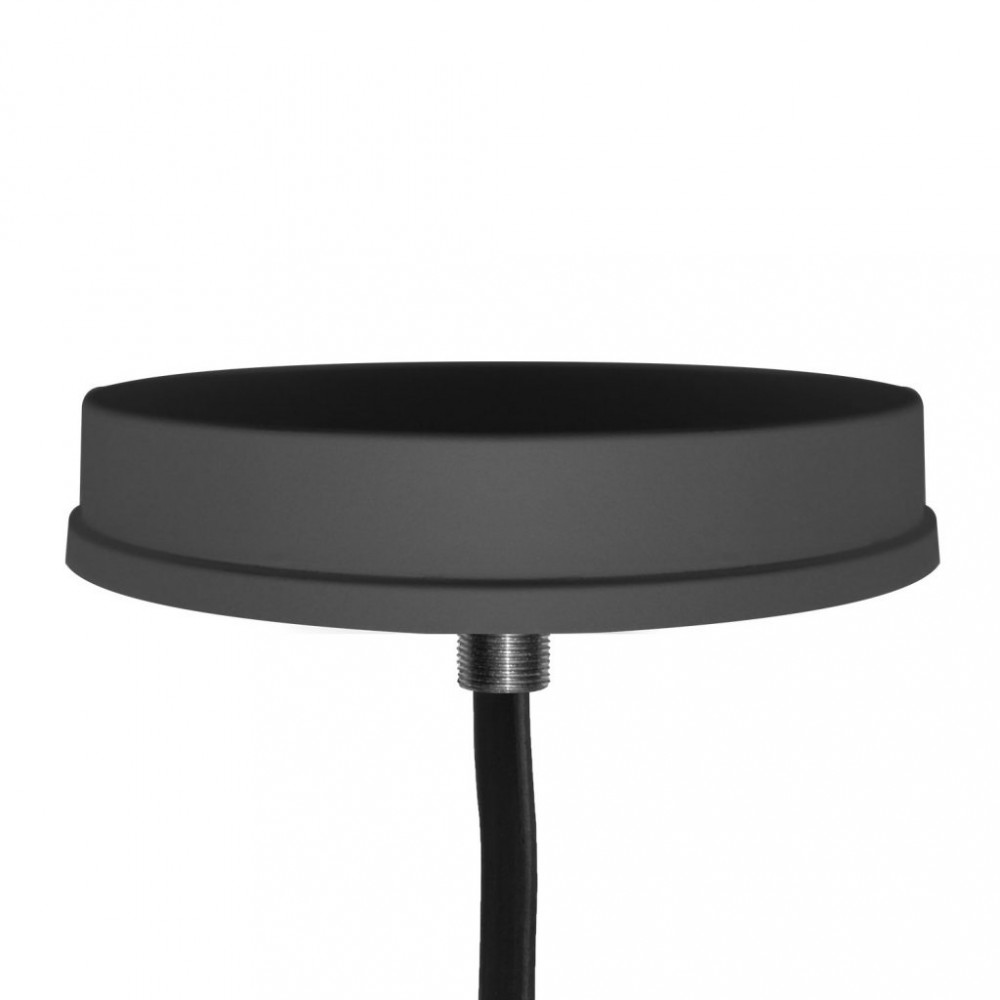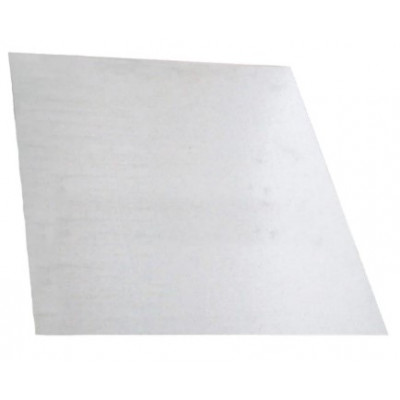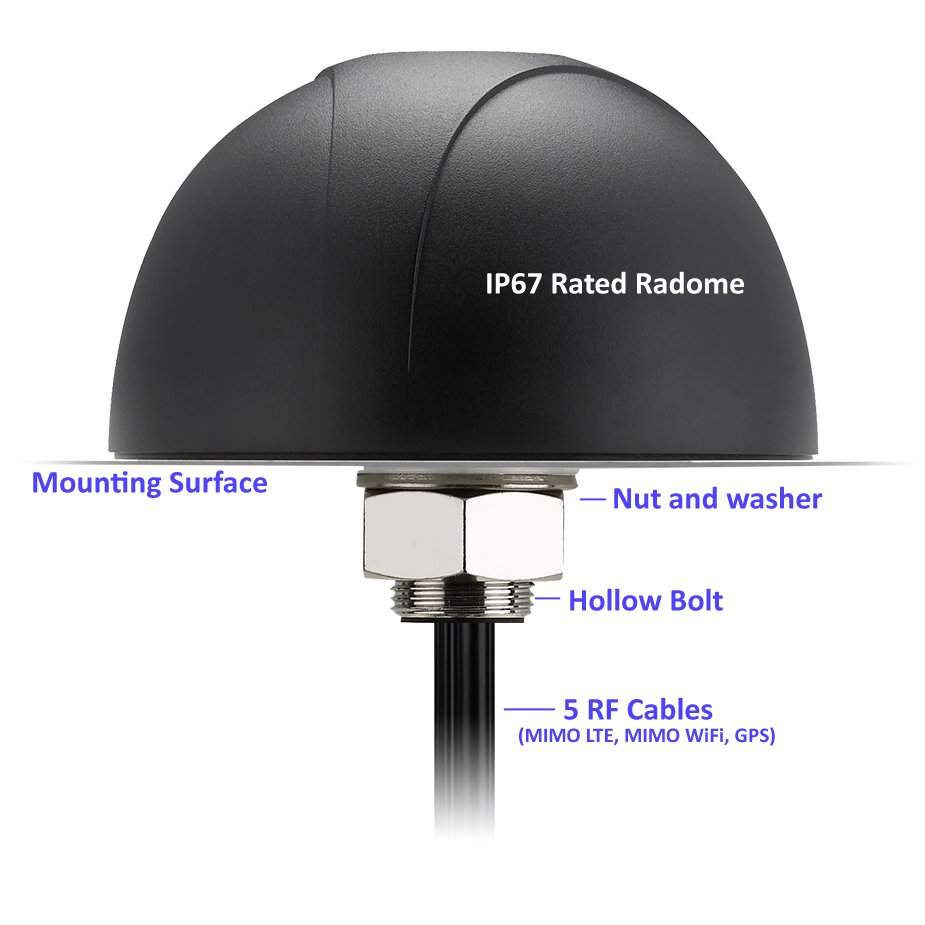Emergency vehicles utilize a variety of antennas for effective communication and operational purposes. Tucking companies use GPS to track their fleets. RV owners install mobile routers to stay connected to the Internet while traveling and camping in remote sites. Mobile connectivity is increasing as well as the proliferation of wireless devices. Selecting the best mobile antennas for your vehicle is crucial for ensuring reliability and performance.
What is a Mobile Multi-Antenna?
A multi-antenna or combo-antenna consists of a single, rugged radome containing several antenna elements, built for mobile applications. These elements may be cellular, WiFi, GPS, UHF, VHF, or Bluetooth. The number of antennas arranged inside a radome ranges from a couple, e.g. 2×2 MIMO LTE, to an impressive 11-in-1 array.
Multi-antennas have a few features in common: First, they combine several antennas into a single weatherproof, rugged radome. Second, through-hole surface mounting, and third, integrated cables with lengths to accommodate easy vehicle installation. The design and construction are further explained here: How Do Multi-antennas Work?
There are hundreds of high-performance mobile antennas on the market. So what’s the best way to sort through the selection and find the best one for your application?
Mobile Antenna Technologies
Vehicle radios implement wireless technologies to connect handhelds, mobile routers, phones, computers, and devices to local and wide area networks. Common antennas found in buses, emergency vehicles, trains, and trucking fleets include:
- VHF/UHF antennas allow two-way radio communication between emergency personnel and dispatch centers.
- GPS antennas enable precise vehicle tracking, location identification, and navigation.
- Cellular antennas provide Internet over a wireless wide area network (WAN). This enables real-time access to cloud-based databases, maps, and communication apps.
- Public Safety antennas are specialized antennas supporting dedicated public safety radio frequencies, connecting emergency services and agencies.
- WiFi antennas connect user devices like phones and laptops to an onboard router or access point. This is used to stream video surveillance, offload data to recording equipment, or access the Internet.
Multi-Antenna Selection
Start with the wireless interfaces of the mobile radios and routers to determine the types, such as 4G or 5G LTE, Wi-Fi, and GPS, and the number of antennas per type. Other considerations are gain, frequency bands, connectors, cable lengths, and mounting.
Match the Antennas to the Router
The most common wireless interfaces required by mobile routers are MIMO cellular, MIMO WiFi, and GPS. 4G LTE routers will have two cellular connections (often labeled Main and Aux on the faceplate) in a 2×2 MIMO configuration. 5G models may have two or four cellular connections arranged as 4×4 MIMO. Nine antennas are required when four WiFi 6 and GPS are added. Of which, four are cellular, four WiFi, and GPS. Some mobile routers accommodate two independent 5G modems, requiring eight total cellular antennas. The total number of antennas can be substantial for a high-end mobile router.

Examples of mobile routers and antenna pairings:
| Mobile Router | Cellular | WiFi | GPS | Total Antennas | Compatible Multi-Antennas |
| Ericsson S700 | 2 | 2 | 1 | 5 | Taoglas MA750 Panorama LG-IN2457 Airgain RECON5 |
| Sierra Wireless XR60 | 4 | 2 | 1 | 7 | Sierra Wireless 6001545 Mobile Mark LTMW942 Parsec PTA5BC2L2WG15B |
| Peplink MAX-BR2-PRO-5G | 8 | 2 | 1 | 11 | Peplink ANT-MB-82G-S-W-6 Panorama LG-IN2902-6-60 Parsec PRO11GP8L2WG-15-B |
Gain and Radiation Patterns
Antenna gain refers to the ability of the antenna to direct the signal in a specific direction. Higher gain antennas provide increased range but result in a narrower radiation pattern, which can limit coverage in specific directions or angles. Omnidirectional antennas provide a 360-degree radiation pattern and a wide coverage area, making them best, if not mandatory, for vehicles. Directional antennas can be used when parked. E.g., a motorhome settled in at a campsite. Most cellular and WiFi omnidirectional antennas have gains of less than 10 dBi.
Cable and Connector Compatibility
Antennas come with a variety of cable lengths; however, you’ll find that lengths in the 15-foot range are the most common for vehicle installations. This is long enough to run the cable bundle from a rooftop-mounted antenna through the headliner and pillar to the radio equipment mounted in the trunk or cargo compartment. Additionally, examine the connector type required by your radios. SMA connectors are commonly used to mate with the cellular and GPS interfaces of mobile routers and reverse polarity SMA (RP-SMA) for WiFi. Although, you will find color-coded FAKRA connectors on some routers, and UHF radios might take a Mini-U, TNC, or QMA connector. Common impedance values are 50 ohms and 75 ohms.
Mounting Options
Several mounting options are available for mobile multi-antennas, including magnetic, adhesive, and surface mounts. However, surface mount is the most common type. The antenna securely mounts through a hole drilled into the vehicle’s roof or trunk lid. A fitted gasket between the surface and antenna keeps out moisture and dust. A bundle of low-loss RF cables – one from each antenna element – passes through a hollow bolt on the bottom of the antenna for protection and easy integration. Surface mounting is permanent, withstanding extreme weather, vibration, and wind loads.
A magnetic antenna (mag mount) is an alternative option for temporary antenna placement, when drilling a hole is not feasible. Magnetic mount bases, integrated with the antenna or sold as an accessory, are easy to remove or reposition. Be aware. Some magnetic mounts have a low wind load rating and can detach at speeds over 60 MPH. Check the wind load specification before selecting a magnetic mountable antenna.
Ground Plane
For optimum performance, it is recommended the antenna be mounted on a conductive (metal) panel. Ground-independent antennas are designed with a ground plane. They may be installed on a metal or non-conductive panel and will achieve acceptable performance for all the antenna functions. Monopole antennas must be fitted on a conductive ground plane. The recommended size is ½ wavelength diameter at the lowest frequency of operation. A fabricated ground plate like the PTA0587 is adhered to the non-conductive panel. The antenna’s earthing washer makes low-resistance electrical contact.

Environmental Considerations
Mobile antennas operate outside vehicles, exposing them to the worst weather extremes. That’s why the antenna elements are packaged in a rugged IP67-rated dome with a sealed or gasketed base. It is waterproof, UV-resistant, resilient against airborne chemicals, extreme temperature rated, and easy to mount. Antennas for marine and coastal applications have housings of ASA material offering saltwater protection. This can be used in highly corrosive environments. Mounting brackets for marine antennas are made from 316 stainless steel to prevent rust. Rugged weatherproof construction withstands the demands of the operating environment, ensuring your multi-antenna will be reliable and durable.
Experts Are Here to Help
Choosing the right mobile multi-antenna can be a complex task. If you need clarification on any aspect of the selection process, it is always beneficial to seek expert advice. Westward Sales has knowledgeable professionals who provide guidance and assistance. We help you make an informed decision based on your wireless needs.

Hi Kelvin,
Great educational article! I have couple of quick questions:
– Any concerns related to RF insertion/performance losses due to to the 15-foot long cable between trunk of the vehicle (where the cellular/WiFi/GNSS modules are located) and the rooftop antenna solution?
– Can the wireless communications system (where the cellular/WiFi/GNSS modules are located) be located either in the trunk of the car or near the front driver’s dashboard while supporting the 15-foot long cable to the vehicle rooftop?
Thanks very much.
Regards,
Mahib
Hello Mahib, Thanks for the questions. There are cable losses, which increase with length. However, there are no concerns about 15-foot cables in a vehicle. It’s a good length to work with and usually long enough to cable from the exterior antenna to the radio(s), which may be located in the trunk or dashboard.